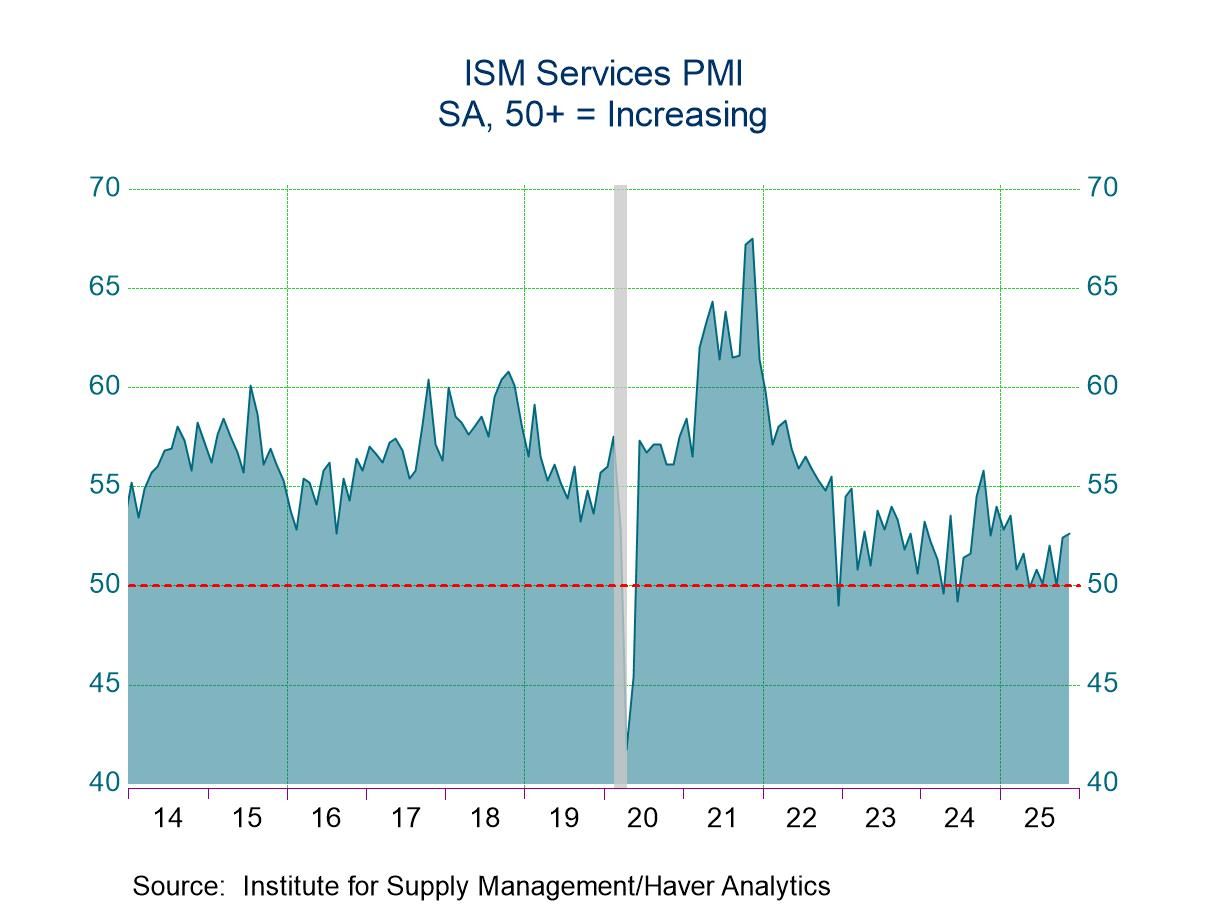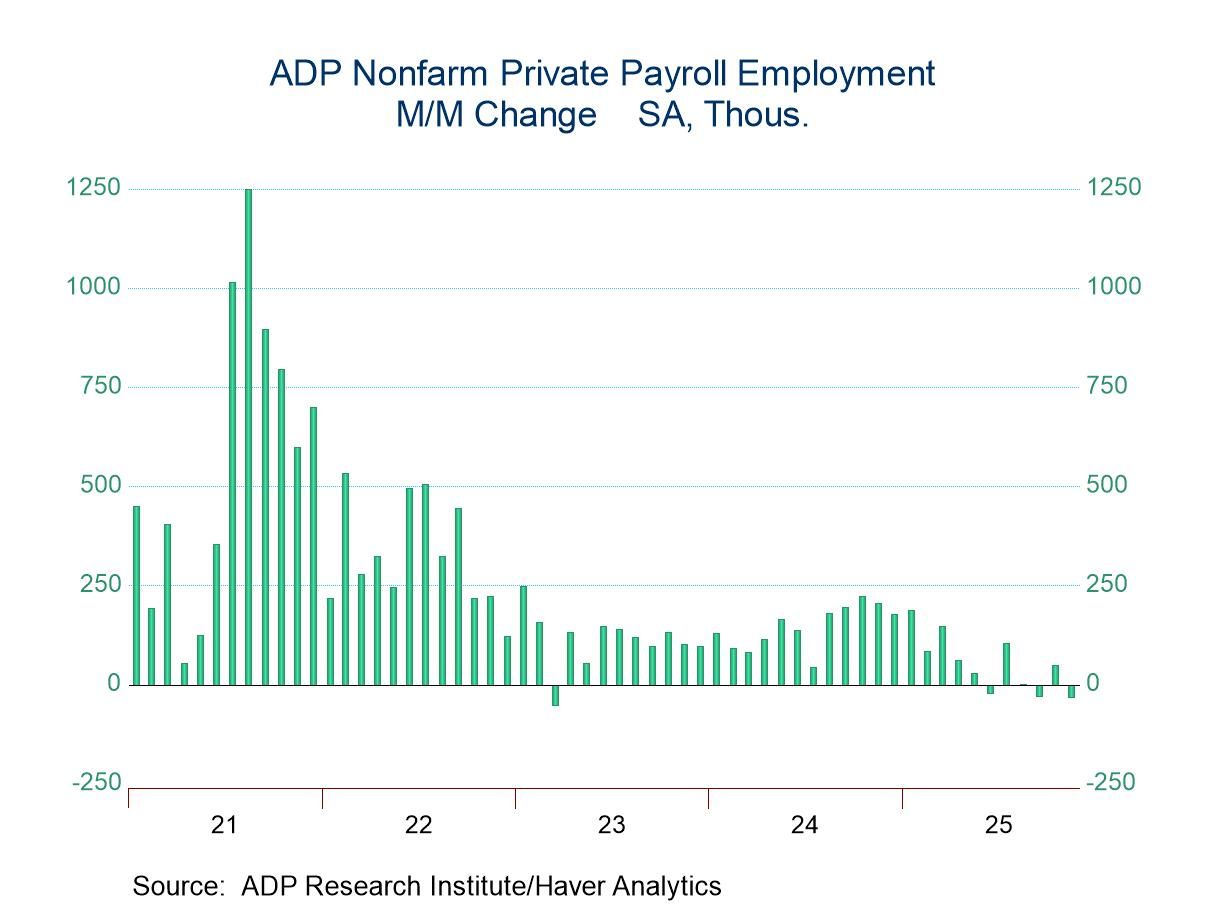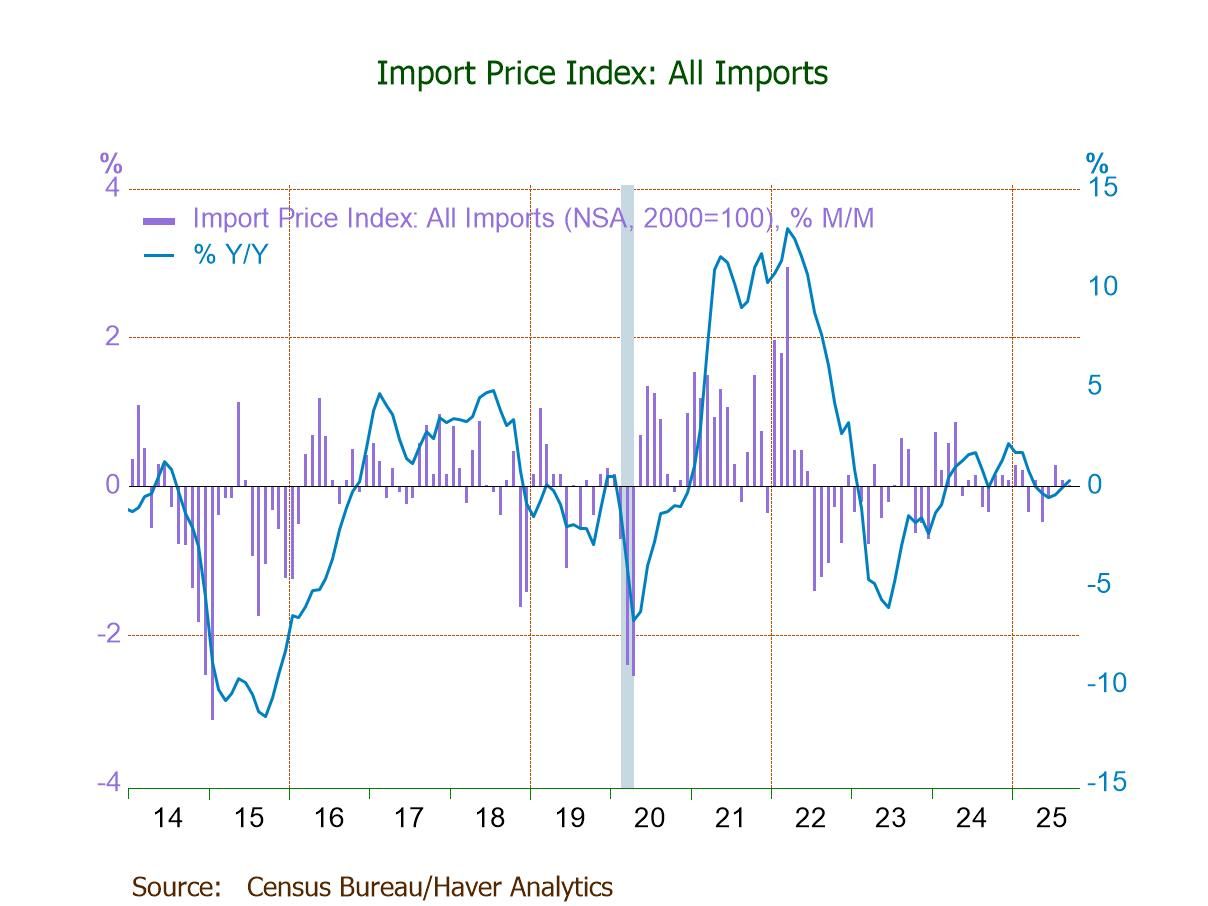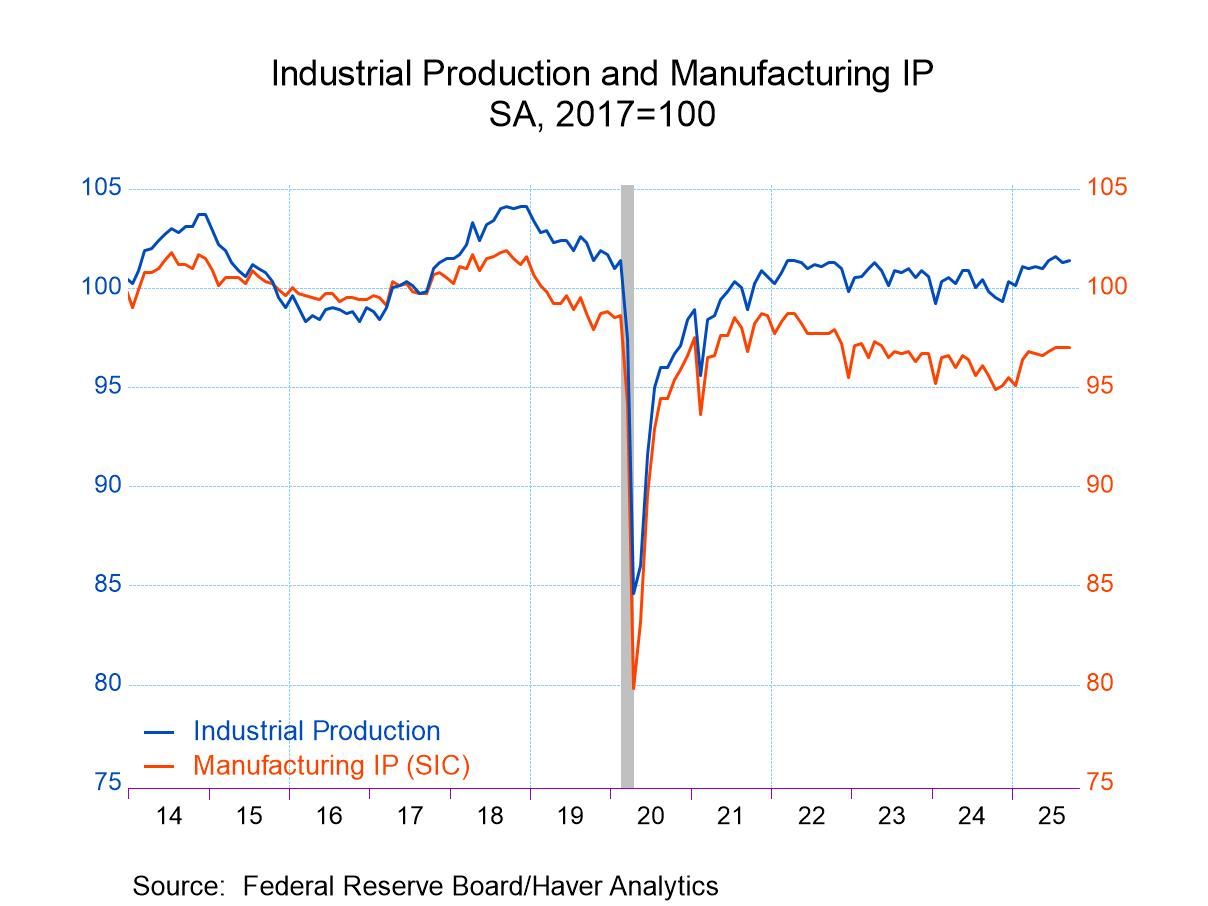 Global| Oct 27 2006
Global| Oct 27 2006US GDP Growth Weakest Since 2003
by:Tom Moeller
|in:Economy in Brief
Summary
U.S. real GDP grew just 1.6% (AR) last quarter, well below the 3.5% average of the prior four quarters and the weakest since 1Q 2003. Growth even fell short of Consensus expectations for a 2.5% rise. Virtually all of the [...]
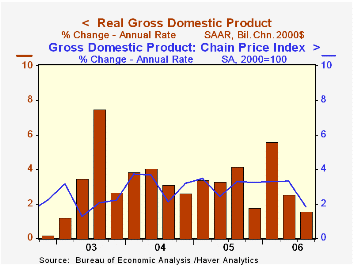
Virtually all of the disappointment was due to housing. Residential investment fell 17.4% (AR, -7.7% y/y) after an 11.1% decline during 2Q. That decline alone sapped 1.1 percentage points from GDP growth last quarter and it was the largest quarterly subtraction made by housing since 1981.
A deterioration in the net export deficit also subtracted 0.6 percentage points from last quarter's growth in real GDP. That followed a 0.4 point addition during 2Q. Exports grew 6.5% (9.0% y/y) but import growth outpaced that with a 7.8% (7.8% y/y) rise. It was paced by a 13.4% rise in nonauto consumer goods, a 15.4% rise in capital goods and an 18.6% rise in industrial supplies & materials other than petroleum.
Growth in final sales to domestic purchasers overall accelerated to 2.2% despite the weakness in housing. The acceleration was due to 3.1% (2.8% y/y) growth in real personal consumption expenditures which was up from 2.6% growth during 2Q while quarterly growth in business fixed investment nearly doubled to 8.6% (7.9% y/y). Equipment & software investment recovered after a 2Q decline with a 6.5% (5.7% y/y) gain. Notably strong was business investment in structures, up 14.1% (13.7% y/y).
Government expenditures also picked up last quarter and grew 1.9% (1.6% y/y) though the Federal government's spending on defense fell 0.7% (-1.1% y/y), the third decline in the last four quarters. 
A lessened pace of investment in inventories subtracted 0.1 percentage points from GDP growth following a 0.4 point addition during 2Q.
The GDP chain price index rose just 1.8%, its weakest quarterly advance in over three years. The PCE chain price index grew just 2.5% (2.9% y/y). That increase was held back by quarterly declines in prices of furniture (-4.3% y/y) and apparel (+0.1% y/y). The chain price for residential investment fell 0.4% (+3.1% y/y), the first quarterly decline since early 2002.
Barreling Down the Road To Recession? from the Federal Reserve Bank of St. Louis can be found here.
| Chained 2000$, % AR | 3Q '06 | 2Q '06 | Y/Y | 2005 | 2004 | 2003 |
|---|---|---|---|---|---|---|
| GDP | 1.6% | 2.6% | 2.9% | 3.2% | 3.9% | 2.5% |
| Inventory Effect | -0.1% | 0.4% | 0.6% | -0.3% | 0.4% | 0.0% |
| Final Sales | 1.7% | 2.1% | 2.3% | 3.5% | 3.5% | 2.5% |
| Foreign Trade Effect | -0.6% | 0.4% | -0.1% | -0.1% | -0.5% | -0.3% |
| Domestic Final Demand | 2.2% | 1.6% | 2.4% | 3.6% | 4.0% | 2.8% |
| Chained GDP Price Index | 1.8% | 3.3% | 2.9% | 3.0% | 2.8% | 2.1% |
Tom Moeller
AuthorMore in Author Profile »Prior to joining Haver Analytics in 2000, Mr. Moeller worked as the Economist at Chancellor Capital Management from 1985 to 1999. There, he developed comprehensive economic forecasts and interpreted economic data for equity and fixed income portfolio managers. Also at Chancellor, Mr. Moeller worked as an equity analyst and was responsible for researching and rating companies in the economically sensitive automobile and housing industries for investment in Chancellor’s equity portfolio. Prior to joining Chancellor, Mr. Moeller was an Economist at Citibank from 1979 to 1984. He also analyzed pricing behavior in the metals industry for the Council on Wage and Price Stability in Washington, D.C. In 1999, Mr. Moeller received the award for most accurate forecast from the Forecasters' Club of New York. From 1990 to 1992 he was President of the New York Association for Business Economists. Mr. Moeller earned an M.B.A. in Finance from Fordham University, where he graduated in 1987. He holds a Bachelor of Arts in Economics from George Washington University.



